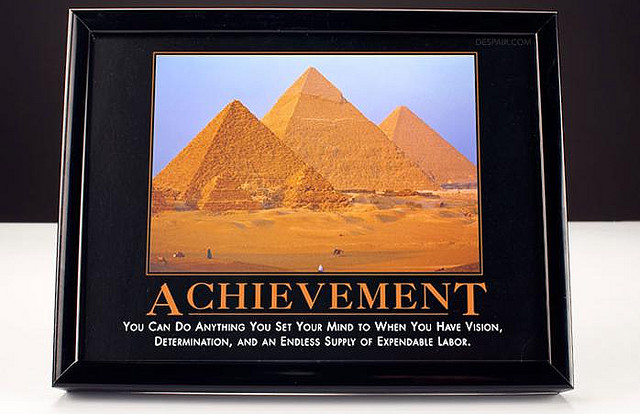Tina Seelig, author of What I Wish I Knew When I Was 20 (Amazon) teaches courses in Entrepreneurship and Creativity at Stanford. I was fascinated as to what teaching entrepreneurship would consist of (you can see the course list here). The big message I found in her book was about giving yourself permission – permission to do the things that you’re passionate to achieve, and permission to fail, and learn, in the process.
IBM’s Extreme Blue program is described as a “Leadership Development Program”. As a result, it gives the teams (with the technical students and an MBA) permission to explore, create links across functions, ask questions of people – some teams even of Sam Palmisano. I learned a lot about leadership in this program, but mostly it wasn’t directly taught – it was found, and nourished.
The education system, in search of conformity, smothers leadership. At 10, I learned to write in the same joined-up cursive as my peers. At 14, I read the same book in class and learned the meaning that my teacher said was there, but I never saw. At 16 I dressed in the same hideous uniform as all the other girls, and shared a tiny identikit room. Leadership positions were defined, and assigned – be a prefect (ick, no), or soloist in the choir. No, you can’t go kickboxing.
Ken Robinson asks, do schools kill creativity? It seems like the structure could kill leadership as well.
Government workers too, have a lot of structure. It’s a very well-defined, slow moving, system. Living in Ottawa, everyone talks about the waste and bureaucracy of the government. I’ve noticed, when talking to a government worker, how they always say – yes, but my department is different. And then, shortly after, start complaining about one of their colleagues whose incompetence and lack of productivity is legendary.
What’s all this got to do with being an entrepreneur? It’s that we should have a choice. Do we need to teach entrepreneurship and leadership to give that choice back, because schools and governments have crushed it with structure?
I challenged myself, every month this year, to lend $100 new dollars on Kiva (I also reloan repaid funds). I loan to women, because they tend to use the extra money they make to reinvest in their families – in education, and health. In developing countries, the opportunities aren’t there, unless they make the opportunity themselves. Their option for lifting themselves out of poverty, is to be an entrepreneur.
I was lucky to never be in poverty in the first place. I’ve been getting defensive because I’m told so often that I should want to be an entrepreneur – but I don’t. But, I think given different circumstances and pressure I could do it. Luckily for me, I feel that I can do what I want to do where I am, and whilst I don’t have any kind of “title” of leadership, I don’t feel a lack of leadership opportunities. There are so many in the gaps.

